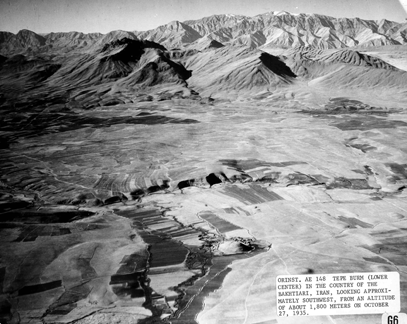|
Other Archaeological Sites / The Neolithic of the Levant (500 Page Book Online) Ancient Bakhtiari Region of SW Iran
The high mountains of the Bakhtiari country were largely left out of the archeological equation despite their proximity to the heartland of the Mesopotamian and Elamite civilization. Work in the region indicated the long settlement history of these mountains. The region was utilized probably as early as the Middle Palaeolithic and certainly by the Upper Epi-Palaeolithic. The region experienced a unique Neolithic phase exemplified by sites in the region. Villages become increasingly common during the Early Chalcolithic and reached a high point during the Middle Chalcolithic. Especially exciting is evidence of colonies on one of the major routes through the mountains with ties to communities from the Central Iranian Plateau and the Khuzestan lowlands. Much less common is Iron Age material although the cache from Gandomkar is especially exciting Mesopotamian pottery as well as vessels typical of the Central Iranian Plateau (Tepe Sialk III) are present. Both groups appear to be intrusions within the Bakhtiari region and may represent serial attempts at outposts on a major route connecting the Central Iranian Plateau and Khuzestan. Note that this suggests that the Sialk-related attempt precedes the Mesopotamian intrusion. Clearly the central Bakhtiari highlands were not under the direct control of Mesopotamian communities. Cooperation by local tribal elites represented the necessary precondition for foreign enclaves and their wares to be present there in situ. The key Mesopotamian site -- Sharak -- also contains large amounts of Late Sialk III ware - which is just as foreign to the indigenous tribes of the Bakhtiari region. This suggests either an earlier domination of the trade route by central-plateau communities or a port of trade where the two regions exchanged goods (Page 600 in 1). |
